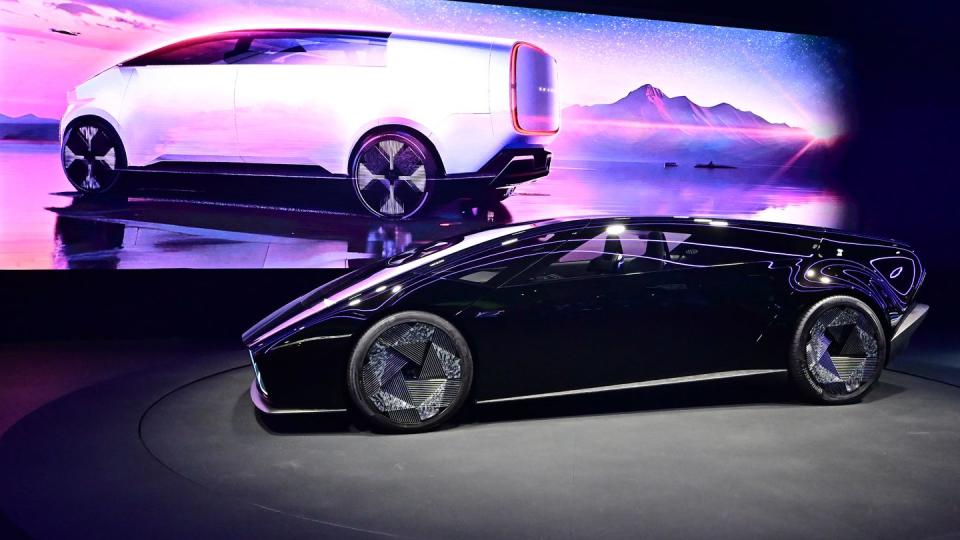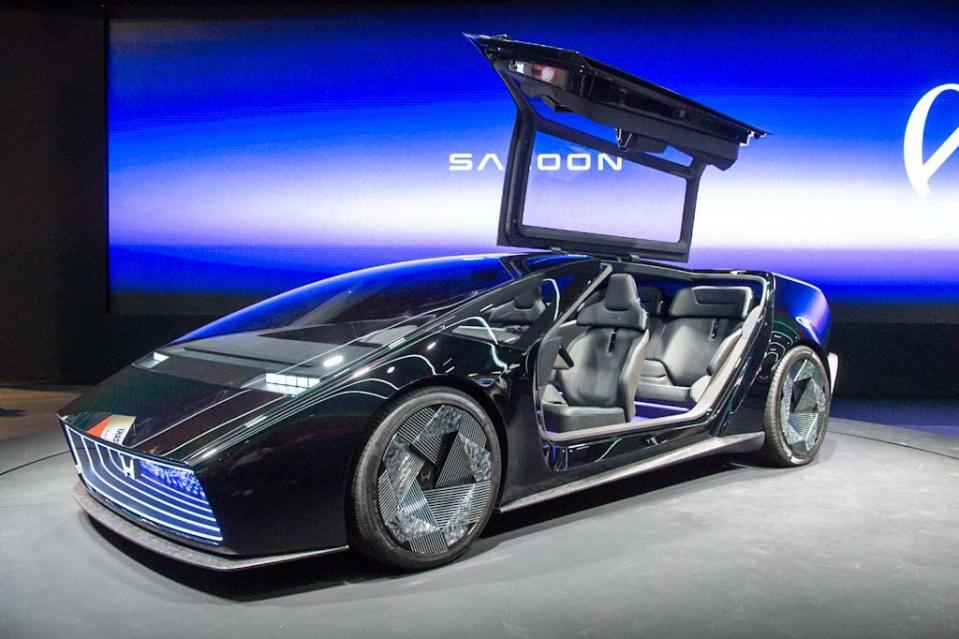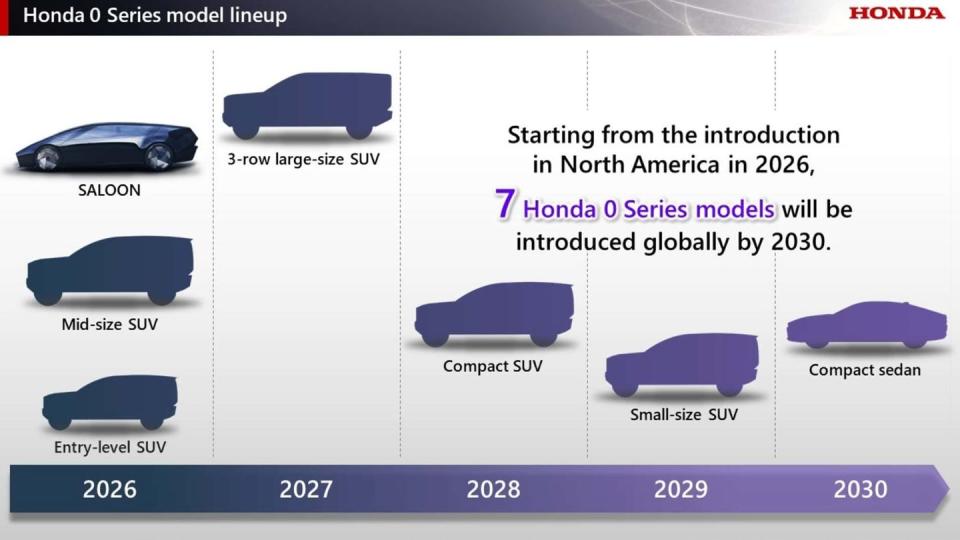What to Expect from Honda’s EV and Hybrid Future

Honda plans for EVs and FCEVs to represent 40% of its global output by 2030, ahead of plans for an all-electric and fuel cell future by 2040.
The automaker is placing a bigger stake on hybrids in the coming years, including a new e-AWD system.
Honda plans to adopt mega-casting method popularized by Tesla in its next generation of EV models, which will follow the "Thin, Light, and Wise" approach.
Honda's relationship with the EV market has been a curious one, with the automaker having fielded a battery-electric sedan in the past decade, but one that hardly anyone can name today. The Honda Clarity EV even overlapped the Tesla Model 3 production, but it was offered in only a couple of states and seemingly upstaged by just about everything else with a battery at the time.
The first truly mass-market Honda EV arrived stateside only this year, but the Prologue is still based on GM's Ultium platform. And it won't be until 2026 when we see Honda's e:Architecture platform give us Honda's own battery-electric models.
But what about Honda's plans through the rest of the decade?
A few days ago the automaker gave a rare glimpse into its longer-term EV and hybrid plans, as the latter powertrain is seemingly set to play a bigger role than electric models, at least in the near future.
"Honda has not changed its belief that EVs are the most effective solution in the area of small mobility products such as motorcycles and automobiles, and Honda's electrification target to make EVs and FCEVs (fuel-cell electric vehicles) represent 100% of its global vehicle sales by 2040 remains unchanged," the automaker said, perhaps addressing current industry unease about the slowing momentum of EV adoption.
But you'll also note that hydrogen fuel-cell electric vehicles (FCEVs) also received a prominent mention in this statement. At the moment, the automaker plans for EVs and FCEVs to collectively represent 40% of its global sales by 2030, and a big portion of the remaining 60% will be hybrids.

Overall, this strategy differs from that of some other, smaller automakers that have planned to go EV-only by 2030, so Honda still sees plenty of roles for other powertrains in various markets. In fact, getting to 40% EV and FCEV share in five and a half years is going to take a rapid push in that direction.
By 2030, Honda plans to produce some 2 million EVs annually, which will represent a major hike from its current EV output.
When it comes to just what these future EVs might look like, Honda gave a preview of its very futuristic 0 Series models with the Saloon and Space-Hub concepts at CES earlier this year. In fact, the Saloon concept is now described as previewing the flagship of the planned series, and is due to arrive in production form in 2026. So it's not that far away.
"The period of transition from ICE to EV leading up to the mid-2020s will be a phase in which Honda will respond flexibly to changes in demand and the business environment while also ensuring profitability," the automaker added. "During this phase, our existing production facilities will be fully utilized to produce both ICE and EV models on the same line."
Indeed, Honda views the current period as a transitional phase when it comes to EVs, while the popularization period, as it calls it, will only arrive in the second half of the 2020s.
In addition to focusing on the complete battery value chain, starting with the procurement of raw materials and ending with eventual recycling, Honda also plans to adopt the mega-casting method recently popularized by Tesla in EV production, following the "Thin, Light and Wise" approach.

In this case, "thin" refers to its newly developed e-Axle as well as an ultra-thin battery pack that will allow vehicle floors to be quite different from what they were in EVs a decade ago. Honda also plans to achieve a reduction in the number of parts and overall vehicle weight, targeting savings of some 220 pounds compared to its earlier EV models. This approach will reflect the "light" part of the formula.
"Wise," on the other hand, refers to Honda's own planned vehicle operating system, one that with a digital UX that will be optimized for each owner.
"The Honda 0 Series models which will be introduced in the second half of the 2020s will adopt a centralized architecture, which will consolidate multiple ECUs which are serving individual functions to control the vehicle's systems, to a core ECU and serve as a single 'brain' for the entire vehicle," the automaker indicated.

When it comes to hybrids, one nuance is that in addition to its existing e:HEV system, Honda will develop an electric all-wheel drive (e-AWD) system, which will use electric motors developed for EVs in contrast to earlier mechanical AWD systems. Essentially, there will be an engine up front powering the front wheels, while an electric motor out back will power the rear wheels, dropping the mechanical connection between the two axles.
"At the same time, the structure of our ICE business, which includes hybrid-electric models, will be further strengthened to ensure steady earnings," the automaker noted. "Then, the funds generated by ICE business will be invested into EV and other new businesses."
The end of the decade for Honda will be largely dominated by hybrids, therefore, with BEV and FCEV models playing an important second role.
Could EV demand plateau at some point in this decade and become stuck at some level, like 15% or 20% of the market in the US? Let us know what you think in the comments below.

 Yahoo Autos
Yahoo Autos 